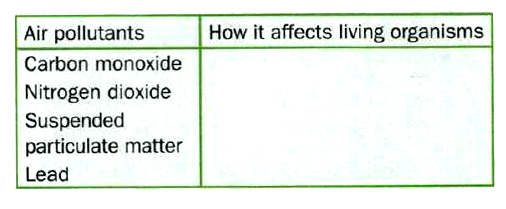How is information about weather and related facts collected organized and dispensed in India?
Text Solution
In India, weather-related information is collected and published under the auspices of the Indian Meteorological Department, New Delhi, which is also responsible for weather forecasting A typical surface observatory has instruments for measuring and recording weather elements like temperature (maximum and minimum), air pressure, humidity, clouds, wind and rainfall. Specialised observatories also record elements like radiation, ozone atmospheric trace gases, pollution and atmospheric electricity. These observations are taken all over the globe at fixed times of the day as decided by the WMO and the use of instruments are made conforming to international standards, thus making observations globally compatible. In India, meteorological observations are normally classified into five categories depending upon their instruments and the number of daily observations taken. The highest category is Class-I.
Typical instrumental facility available in a Class-I.observatory consists of the following:
(i) Maximum and minimum thermometers
(ii) Anemometer and wind vane
(iii) Dry and Wet bulb thermometer
(iv) Rain gauge
(v) Barometer Observations are taken in these observatories normally at 00,03,06,09, 12,15,18,21 hours (Greenwich Mean Time) around the globe. However, for logistic reasons, some of the observatories take limited number of daily observations upper air observation during daytime only. Weather satellites make comprehensive and large-scale observations of different meteorological elements at the ground level as well in the upper layers of the atmosphere. The geo-stationary satellites provide space-based observations about weather conditions. The Indian National Satellite (INSAT) provides valuable observations of temperature, cloud cover, wind and associated weather phenomena.
|
Topper's Solved these Questions
- WEATHER INSTRUMENTS MAPS AND CHARTSBOOK - FULL MARKSCHAPTER - WEATHER INSTRUMENTS MAPS AND CHARTSEXERCISE - ADDITIONAL QUESTIONS WITH ANSWERS ( VIVA QUESTIONS)
5 Videos
- WEATHER INSTRUMENTS MAPS AND CHARTSBOOK - FULL MARKSCHAPTER - WEATHER INSTRUMENTS MAPS AND CHARTSEXERCISE - ADDITIONAL QUESTIONS WITH ANSWERS ( MAP SKILLS)
2 Videos
- WEATHER INSTRUMENTS MAPS AND CHARTSBOOK - FULL MARKSCHAPTER - WEATHER INSTRUMENTS MAPS AND CHARTSEXERCISE - ADDITIONAL QUESTIONS WITH ANSWERS ( SHORT ANSWER TYPE QUESTIONS)
10 Videos
- WATER IN THE ATMOSPHEREBOOK - FULL MARKSCHAPTER - WATER IN THE ATMOSPHEREEXERCISE - (ADDITIONAL QUESTIONS WITH ANSWERS ) V HOTS Questions
2 Videos
- WORLD CLIMATE AND CLIMATE CHANGEBOOK - FULL MARKSCHAPTER - WORLD CLIMATE AND CLIMATE CHANGEEXERCISE - TEST ASSIGNMENT
3 Videos
Similar Questions
Knowledge Check
The latest information about agriculture markets is collected and published by the ___________.
AFood Corporation of IndiaBDirectorate of Economics and StatisticsCNational Council of Applied Economic ResearchDIndian Statistical InstituteCollection of information about the local weather from the newspapers is an example of …… source.
AprimaryBsecondaryCtertiaryDNone of the above
Fill the table given below with information about how the given air pollutants affect living organisms.

View SolutionCollect the information about the different steps of metal extraction and explain it in the class. Collect the related videos
View SolutionRelations between variables and facts about AP.
View SolutionCollect more information about corals from internet.
View SolutionHow does remote sensing help in the collection of information about the properties of the objects and phenomena of the earht surface ?
View SolutionInternet is my friend.
Collect the information from internet about Big-bang theory related with formation of stars and planets and present it in your class.
View Solution
